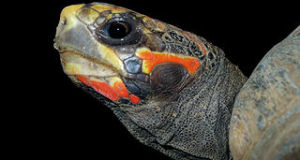Nutrafin Cycle is used to help establish high populations of nitrifying bacteria (the species that convert ammonia to nitrites and nitrates) in aquariums. At a recent seminar sponsored by Hagen, the manufacturer, I learned that the product has been modified in several important ways.
Cycle contains 5 strains of bacteria, in correct proportion of lithotrophic to heterotrophic types, and these activate almost immediately upon exposure to salt or fresh water. This ability results from a unique fermentation process that, by joining the bacteria into naturally occurring units, or “flocs”, prepares them for immediate action. So  effective is the process that fish can now be added to an aquarium on the day it is set up – the nitrogen cycle is in full swing that quickly!
effective is the process that fish can now be added to an aquarium on the day it is set up – the nitrogen cycle is in full swing that quickly!
Nitrifying bacteria are also necessary in amphibian aquariums, as aquatic species in particular absorb toxins over an even greater surface area than do fish, and so succumb to ammonia poisoning quickly. Some years ago I learned that the country’s largest African Clawed Frog laboratory (breeders for research) was suggesting that the bacteria might even be useful in amphibian water bowls, as a safety measure. While I have no direct evidence of such, I have had very good results using bacteria in this way.
The main drawback concerning water bowls is the fact that oxygen levels are low (nitrifying bacteria require a high oxygen environment) and the bacteria used in products other than Cycle take 3-4 days to activate. Given Cycle’s immediate activation and the fact that the bacteria used have fairly low oxygen requirements, I am recommending the product’s use in amphibian water bowls (and aquariums).
Even a single day’s delay in cleaning a water bowl can result in an amphibian’s death – in fact, such is a common occurrence among otherwise long-lived frogs that produce a large volume of waste, such a Horned and African Bullfrogs. Cycle should prove a very effective form of insurance (not, of course, a replacement for water changes) and, happily enough, it is not possible to overdose the animal.
In amphibian aquariums, Cycle used on a weekly basis will also inhibit, via competition, undesirable species of bacteria. Furthermore, the bacteria in Cycle utilize phosphates as a food source, thereby eliminating a nutrient required by algae and limiting its growth.
 That Reptile Blog – Reptile, Amphibian and Exotic Pet Care and Information
That Reptile Blog – Reptile, Amphibian and Exotic Pet Care and Information


